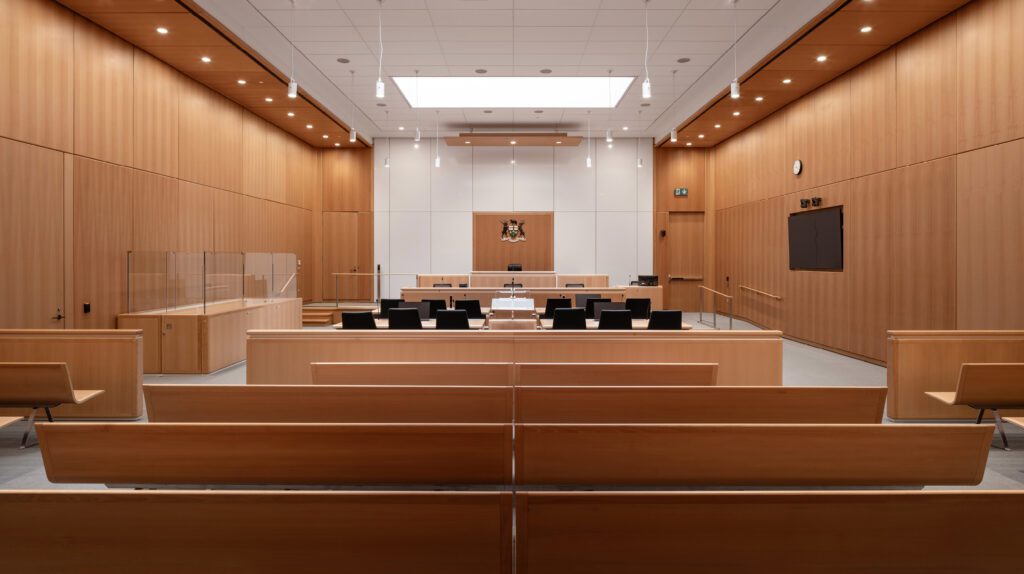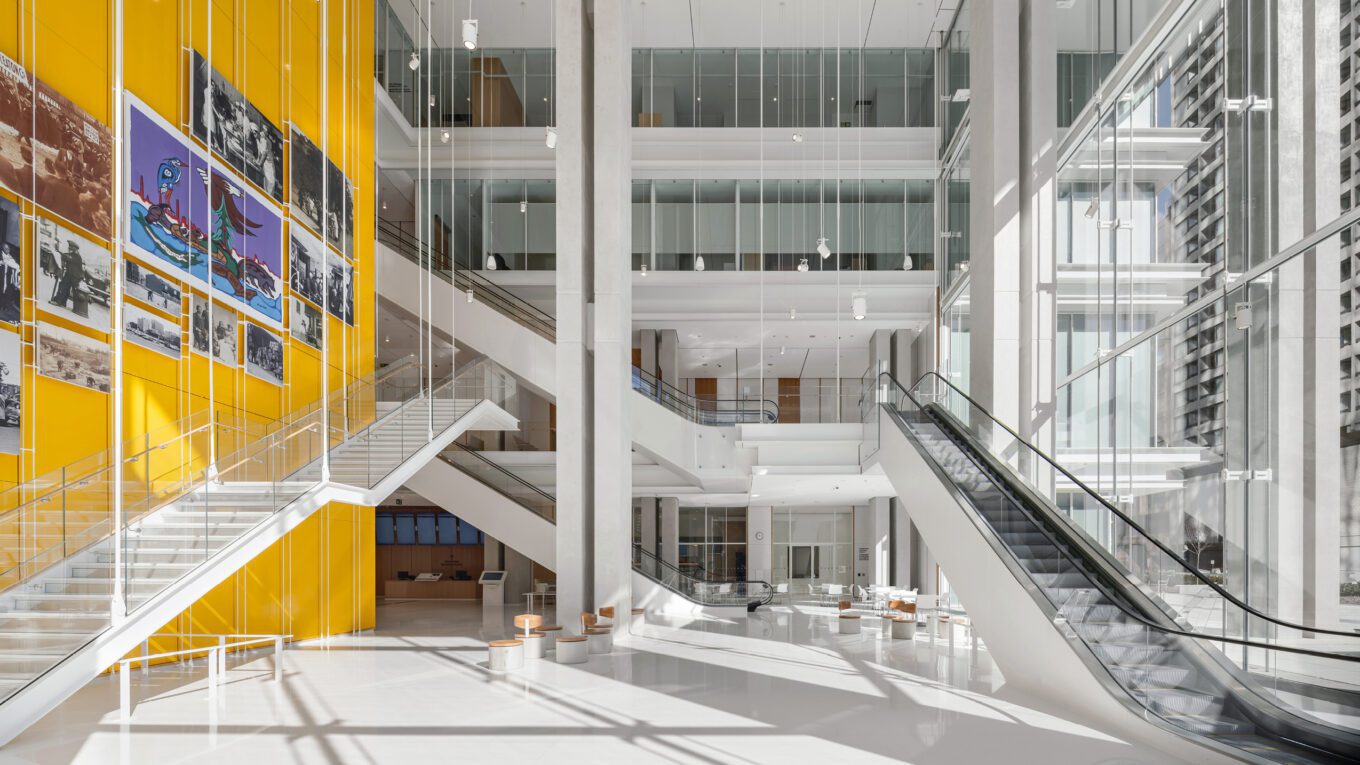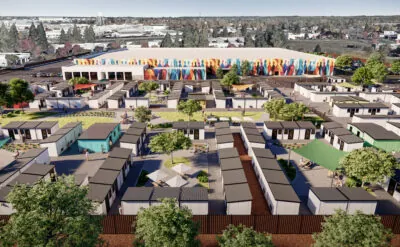The pandemic has accelerated the use of technology in the Justice sector in a decisive way. As architects and engineers, we are responding to the new realities of Justice clients through design to support digital-savvy features across the spectrum of virtual testimonies, real-time access to services, digital wayfinding, and tracking systems. The integration of technology into courthouse design also works to improve safety, security, access, accessibility and well-being.
The Virtual Courtroom
Like all industry sectors, the pandemic has accelerated the dependency on communication technology. The virtual courtroom appearance, once an exception, is now becoming more commonplace in Canada and the US. Short term strategies to deal with the pandemic will inevitably drive long term change and innovation. This shift to virtual court proceedings has revealed several unexpected improvements. People that would have struggled to travel and take a day off to attend a trial or deal with court business are now able to do it remotely, and participants from remote communities can have equivalent access to justice. Juries in some jurisdictions get a much more representative pool of participants, and in general, court proceedings are better attended. The challenge to access justice in this new future will not be transportation and distance but rather equivalent access to digital technology. For some, this will be just a different hurdle to overcome. To manage access, some communities are installing terminals in libraries and community centers.
One illustration of the impact of the pandemic, and the resulting judicial pivot, is the Halton Courthouse in Halton, ON which NORR had been involved in preparing design and procurement documents. We had just completed the evaluation and review stage of the procurement stage when COVID-19 hit. The project was not just put on hold but completely canceled, not because of the pandemic but as a result of how much better the emergency processes put into action worked better than expected. This positive disruptive effect was identified by the Ministry of the Attorney General as an opportunity for the modernization of an archaic law system and a catalyst for a concerted move towards a more efficient and user-focused approach. The future will be one where all court cases will be online, and courts will become multi-function justice centers.
Some trends in the Ontario jurisdiction were already moving towards a more digital existence before the pandemic. Courtrooms were being set up for complete video conferencing for interaction with distant participants and with in-courtroom consulting booths, allowing lawyers a private place to consult with their clients when they are appearing from a remote location. Parallel facilities are being developed in custody facilities as well. We are also seeing innovations in the delivery of translation services. In one project, there is a separate suite dedicated to translation services that can potentially access, through audio and video technology, not just court proceedings within the building but across the province. This type of technology is critical to providing real-time access to critical translation services in multilingual jurisdictions.

Accessibility and Sustainability
In an environment that pursues fairness and equality, we must design more accessible and sustainable buildings. Courthouses must feel safe and welcoming for everyone. We’re designing our buildings with an emphasis on accessibility for all participants as a fundamental part of the justice system, with barrier-free routes throughout, barrier-free positions for judges, witnesses, jury members and the public and features such as tactile navigation, digital kiosks and adjustable millwork. Our concept of accessibility also includes feature design elements such as open atriums and glass-filled public spaces that contribute to a welcoming environment and the feeling of transparency in the justice system.
We also focus on strengthening the links and relationship between justice buildings and the communities they serve. In the Elgin County Courthouse in St. Thomas, ON, we designed display cases with local artifacts and heritage plaques that celebrate and explain the courthouse context. In the New Toronto Courthouse, we are continuing this strategy and expanding this cultural outreach to include artifacts and information on the rich history of the communities that have inhabited the site at the heart of Toronto; as well as the first Indigenous Learning Center in an Ontario Courthouse.
Justice buildings are also moving towards a more environmentally sustainable approach as we look towards addressing the challenge of global warming. We have completed several LEED Gold courthouses and have a number of others going through the LEED process, now including one with a full rooftop solar field. We have also explored displacement ventilation in courts including the Surrey Courthouse redevelopment in British Columbia that enabled a much smaller mechanical system and energy footprint in addition to better courtroom air quality environment.
However, in the Justice field, sustainability means more than a commitment to the environment. It is also about supporting a society that is just and resilient. This means a movement towards a more nuanced process that looks for alternatives to incarceration. To support this, there has been a trend towards specialty courts that can focus on particular cases that warrant special treatment. An example again is the New Toronto Courthouse where a number of specialty Indigenous, Drug Treatment and Mental Health Courts are included to help individuals to avoid incarceration and instead redirect them to more appropriate programs where they can heal and hopefully break the cycle of recidivism.
Justice design should reflect and uphold the values of the people it represents. As designers, we must hold ourselves accountable to incorporate culture, sustainability, and accessible technology to contribute to a fair and equal justice system.



